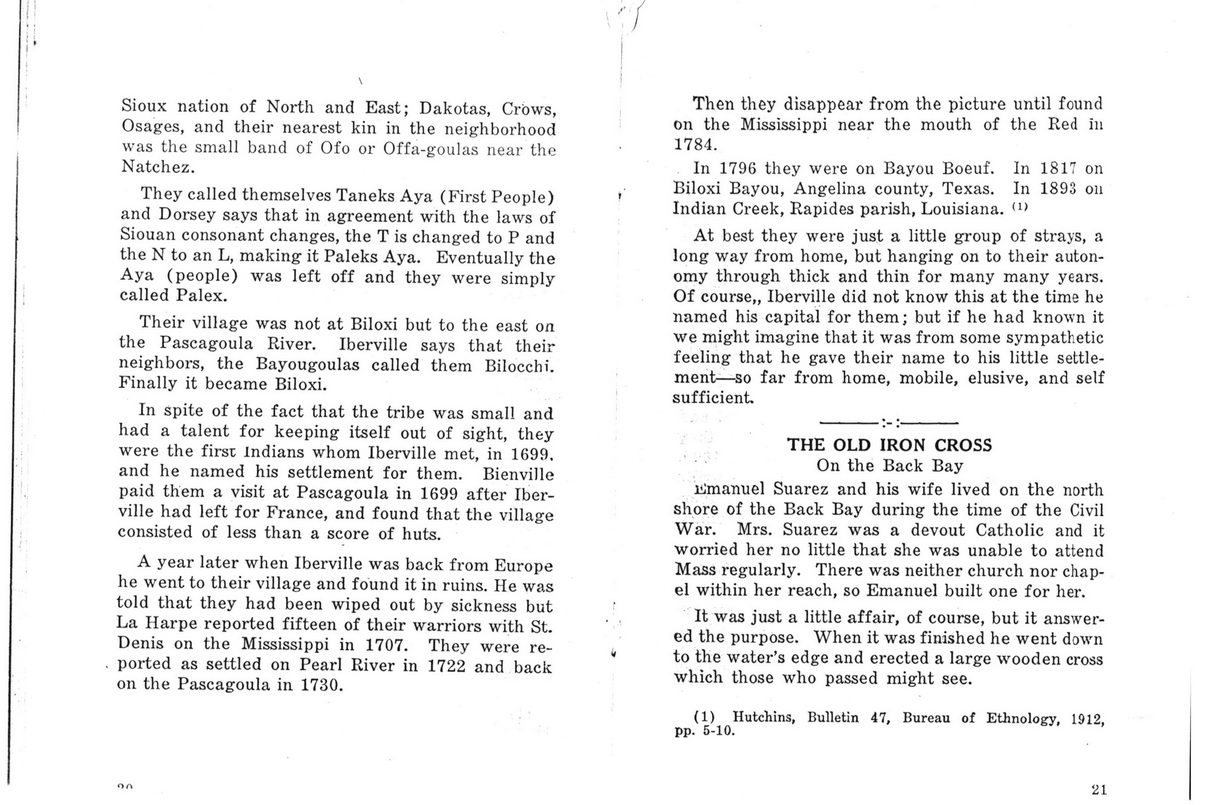This text was obtained via automated optical character recognition.
It has not been edited and may therefore contain several errors.
\ Sioux nation of North and East; Dakotas, Crows, Osages, and their nearest kin in the neighborhood was the small band of Ofo or Offa-goulas near the Natchez. They called themselves Taneks Aya (First People) and Dorsey says that in agreement with the laws of Siouan consonant changes, the T is changed to P and the N to an L, making it Paleks Aya. Eventually the Aya (people) was left off and they were simply called Palex. Their village was not at Biloxi but to the east on the Pascagoula River. Iberville says that their neighbors, the Bayougoulas called them Bilocchi. Finally it became Biloxi. In spite of the fact that the tribe was small and had a talent for keeping itself out of sight, they were the first Indians whom Iberville met, in 1699. and he named his settlement for them. Bienville paid them a visit at Pascagoula in 1699 after Iberville had left for France, and found that the village consisted of less than a score of huts. A year later when Iberville was back from Europe he went to their village and found it in ruins. He was told that they had been wiped out by sickness but La Harpe reported fifteen of their warriors with St. Denis on the Mississippi in 1707. They were reported as settled on Pearl River in 1722 and back on the Pascagoula in 1730. an i Then they disappear from the picture until found on the Mississippi near the mouth of the Red 111 1784. In 1796 they were on Bayou Boeuf. In 1817 on ,• Biloxi Bayou, Angelina county, Texas. In 1893 on Indian Creek, Rapides parish, Louisiana. (1) At best they were just a little group of strays, a long way from home, but hanging on to their autonomy through thick and thin for many many years. Of course,, Iberville did not know this at the time he named his capital for them; but if he had known it we might imagine that it was from some sympathetic feeling that he gave their name to his little settlement—so far from home, mobile, elusive, and self sufficient. THE OLD IRON CROSS On the Back Bay Emanuel Suarez and his wife lived on the north shore of the Back Bay during the time of the Civil War. Mrs. Suarez was a devout Catholic and it worried her no little that she was unable to attend Mass regularly. There was neither church nor chapel within her reach, so Emanuel built one for her. It was just a little affair, of course, but it answered the purpose. When it was finished he went down to the water’s edge and erected a large wooden cross which those who passed might see. (1) Hutchins, Bulletin 47, Bureau of Ethnology, 1912, pp. 5-10. 21

Biloxi Historical-Sketch---Bremer-(12)